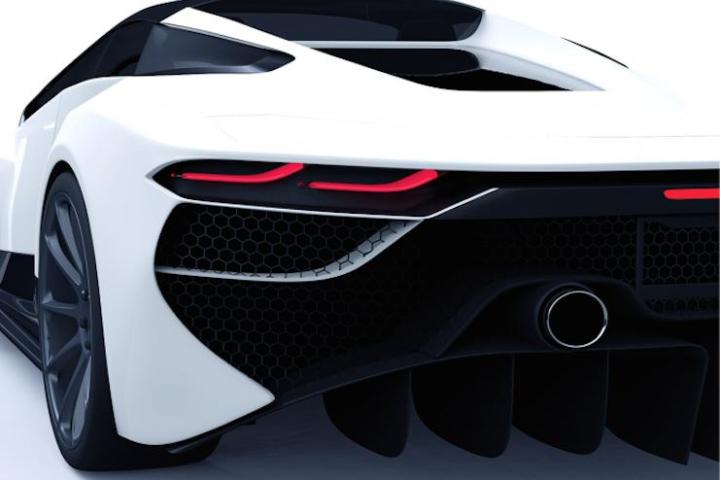
Called the SP-200 SIN, PSC’s supercar is a plug-in hybrid pairing a 9.0 liter naturally-aspirated V8 with a rear-axle-mounted electric motor. The combined result is a monstrous 1700 horsepower. An eight-speed dual clutch automatic gearbox will attempt to transfer the power to the ground via the rear wheels.
Zero to 60 mph will take 2.8 seconds and its top speed is rated at a record-setting 280 mph. The SP-200’s electric-only range, however, is 30 miles. And while the top end is impressive, its 0-60 mph time is already a bit slow by comparison to cars like the Ferrari La Ferrari and Bugatti Veyron SS, which each hit the same mark in just 2.4 seconds. Even the Nissan GT-R NISMO can hit 60 mph in a tenth of a second less.

The mid-engined supercar is manufactured with carbon fiber and aluminum to keep its weight down to 3,080 pounds. By comparison, the McLaren P1 hybrid supercar weighs nearly the same, at 3,069 pounds.
PSC Motors’ CEO Antonio Calva isn’t shy about the new supercar’s goal: to best the world’s fastest automakers and their creations, including the Ferrari La Ferrari, McLaren P1, Porsche 918, and Koenigsegg Regera (that last one might be stretch, though).
“When this project was started five years ago, we wanted to do something new, something special that can pay tribute to some of the world’s fastest cars. Nobody needs 1000 horsepower, so we gave it more,” Calva said.
As might be expected, the SP-200 SIN will be a rare sight, with only 35 examples planned for production. Calva confirmed production will begin in 2016 following a full preview of the car by PSC Motors on June 1.


